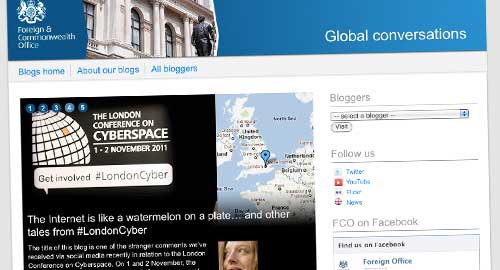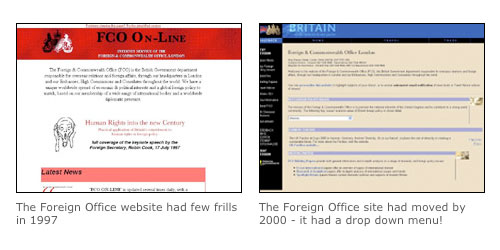
I began my career at the Foreign Office, joining what was known as ‘Guidance Section’. Its job was to be the in-house newswire service for British embassies far and wide. The day started by editing down a daily news summary and press review, based on BBC World Service scripts; at the click of a button on a VT100 terminal (look it up), these were delivered to hundreds of British diplomatic missions by the best means available. Could be fax, could be telex, could be telegram, one or two had something called E-Mail. Cutting edge stuff for 1995, believe me.
We would spend the rest of the day gathering news items from around Whitehall – press releases, transcripts of speeches, whatever. We’d edit these down to the essential, decide which embassies would be likely to receive media enquiries on the subject, and send it out to them. Then, at lunchtime and 5pm, we’d produce a ‘shopping list’ from which embassies could request anything they were interested in, but hadn’t already received.
Departments were generally more than happy to work with us: often we’d get significant announcements ahead of delivery, so that Our Man In Wherever could have a head-start. The one massive exception was the Treasury, on Budget Day.
They would send an official on the short walk up Horse Guards Avenue to our office in the Old Admiralty Building, just by the Arch. He or she (usually he) would have the Chancellor’s speech on a floppy disk. He would sit stony-faced in our office, one of few in the building to have a TV, whilst we all listened to the speech. When the Chancellor’s bottom touched the front bench, the speech having been delivered to the House, he would hand over the floppy disk. And finally, we could begin the work of reformatting the text file, editing out the party-political bits, double-checking it, then sending it out.
Today, any Embassy press officer who’s interested will be reading the same advance press coverage we all are. He/she will watch the speech live – CNN, BBC World, streamed online, whatever – before hitting the Treasury website. And he probably won’t get a single call asking for a copy of the speech.



 News from the Foreign Office
News from the Foreign Office
